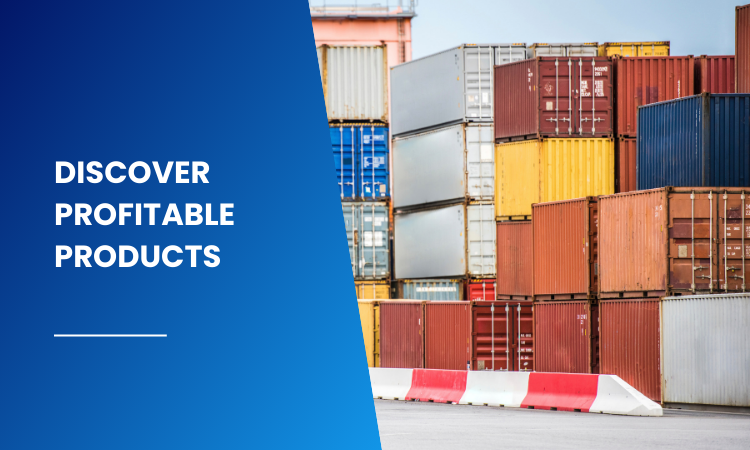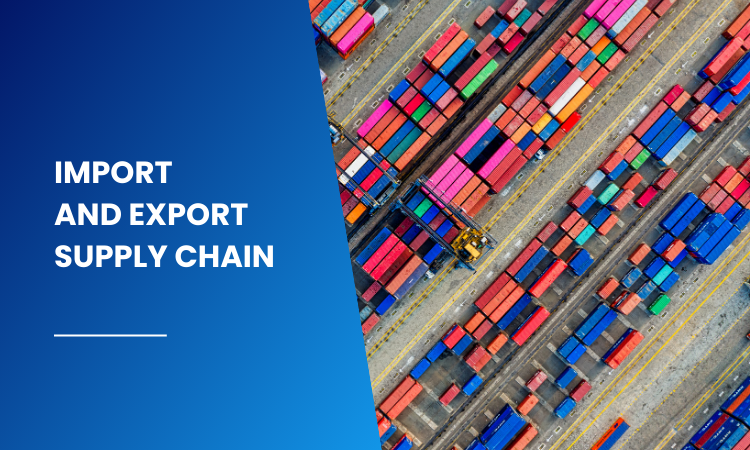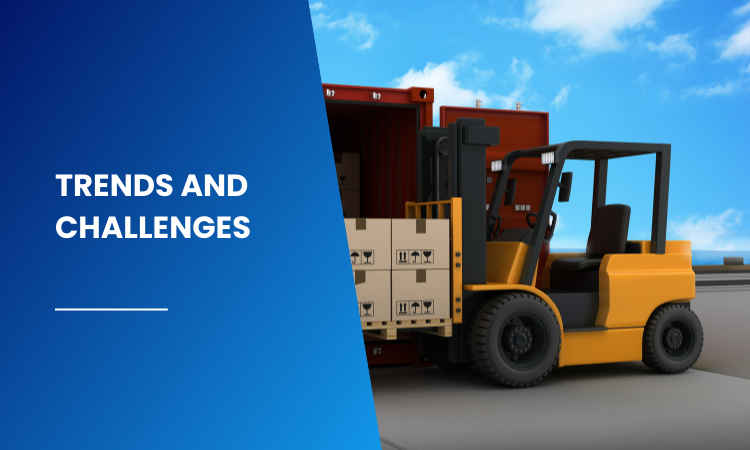Introduction

Businesses of all sizes can find great chances in the world of import and export trade. But it can be hard to figure out how to deal with other countries. We’ll show you how to run a successful import and export business in this blog post. We’ll talk about important areas that are needed to make a global business work well.
Unveiling Niche Markets: Discover Profitable Products for Import and Export Business
Buying and selling goods between countries has a lot of promise, but there can be a lot of competition in markets that are already established. Finding niche markets is important for many businesses that import and export goods. With a loyal customer group and a need for certain products, these are niche markets. Focusing on a niche can help you become an expert in a certain area, which can help you build a loyal customer base and possibly face less competition.
How do you find these incredible secret gems? Some advice:
Find interests and trends: Keep an eye out for new hobbies or trends. Are there certain interests or hobbies that are becoming more popular in the country you want to sell to? There may not be enough goods in your import market that meet those needs.
Make use of online tools: You can find goods that are in high demand and don’t have much competition by using online marketplaces and trend analysis tools. Keep an eye out for search trends or conversations on social media that show unmet wants.
Connect with people who work in your field: Get in touch with foreign distributors, suppliers, and even bloggers who write about the same things you do. Find out about product gaps and possible demand in different areas.
Examine import and export data: Data on trade and export trends that come from the government can be very useful. Look for products that are regularly brought into your target market, and find gaps that you might be able to fill with new goods.

Research & Regulations: Mastering Compliance in Import and Export Business
There are lots of exciting possibilities in the world of import and export business, but you need to know a lot about the rules in order to get around. Companies that import and export goods must do a lot of study to make sure they are operating legally and smoothly.
Importance of Rules & Research:
Thoughts on Duty and Tax: Different countries have different taxes and duties on goods that they import and sell. If you don’t look into these prices, they could have a big effect on your profit margins.
Limits on products and licenses: There may be limits on importing or exporting certain goods, or they may need special licenses. It is important to know these rules ahead of time so that your goods don’t get held up or even taken away at customs.
Labeling and safety standards: Depending on the target country, products may need to meet certain labeling and safety standards. If you don’t meet these standards, your goods could be recalled or you could even be sued.
Mastering Compliance:
Look into it Government Resources: Government websites and trade agencies provide extensive information on import/export regulations, including customs procedures, duty rates, and product restrictions.
Talk to Trade Professionals: You might want to get help from customs brokers or experts in foreign trade who have a lot of experience. They know how to deal with complicated rules and make sure your import and export business follows all of them.
Keep Up with the Rules: The rules for international trade can change at any time. To stay up to date, check government websites for changes on a regular basis or sign up for newsletters from trade associations.

Logistics & Leverage: Building a Strong Import and Export Business Supply Chain
Import and export trading moves quickly, and businesses that do both need a strong and well-run supply chain to be successful. Logistics are very important for making sure shipping happens on time, keeping costs low, and making sure customers are happy.
Laying a Strong Base:
Importers, customs agents, and warehouse providers must be carefully chosen to ensure reliability. Finding partners who have worked in your field before and have a history of being efficient is a good idea.
When planning your supply chain, think about where your suppliers, production sites, and target markets are located. Shorten lead times and cut costs by strategically placing warehouses and optimizing transportation paths.
Using technology to make your supply chain run more smoothly is called technology integration. For clear communication and easy coordination between everyone, use inventory management systems, real-time tracking tools, and contact platforms.
Getting the most out of your supply chain:
You can get competitive rates and maybe even bulk discounts if you build strong ties with your logistics partners and keep up a steady volume.
Use techniques to get the most out of your inventory levels. Keep enough stock on hand to meet customer needs without spending too much on storage.
Look into the value-added services that your logistics partners offer, like light assembly, packing, and labeling. These services can help you run your business more efficiently and give your customers more value.
From Local Hero to Global Player: Scaling Your Import and Export Business
You’ve made a name for yourself in your local market as a successful import and export business. Excellent work! But the world is very big and interesting, and there is a huge amount of room for growth. Here’s how to make your business a global player in the import and export business from a local star.
Broadening Your Scope:
Find places where people really want your goods or the products you can get by researching international markets. Think about things like trade laws, cultural preferences, and economic growth.
Partnering with well-known stores, distributors, or even small businesses in the areas you want to sell to can make it easier to get into those markets and give you useful information about those areas.
Labeling rules, customs processes, and laws can be very different from one country to the next. Make sure that the rules for your target markets are followed by your product and documents.
Expanding Your Import and Export Business:
When you’re dealing with bigger volumes and foreign operations, it’s important to set up strong systems for managing your inventory and fulfilling orders.
To deal with communication, cultural differences, and legal complexities, you might want to hire people who speak more than one language or who specialize in foreign trade.
Use e-commerce sites to reach more people around the world. Make sure that your website can handle people from all over the world by offering multiple languages and safe ways to pay.

Partnerships for Success: Building Relationships with International Suppliers
Strong relationships with foreign suppliers are key to the success of businesses that import goods in the world of import and export trade. Trustworthy suppliers guarantee stable product quality, low prices, and on-time deliveries, all of which are important for an import business to do well.
Building Trust and Working Together:
Wait before choosing the first seller you see. Do a lot of study to find reputable, long-standing companies that have a history of quality and dependability.
Set up easy ways for you and your providers to talk to each other. Talk about output timelines, quality control measures, and possible problems on a regular basis.
Make deals that are fair and good for everyone involved. Make things like prices, minimum order amounts, payment methods, and quality control procedures very clear.
Building Partnerships That Will Last:
Stay in touch with your suppliers on a regular basis, even after official negotiations are over. You could visit their sites on a regular basis to learn more about how they work and to strengthen your relationships with them.
Deal with problems as a group. Together with your sources, figure out how to fix problems like production delays, quality issues, or problems with logistics.
Focus on a relationship where everyone benefits. Look for ways that you can both grow. For example, you could introduce them to new markets or give them early access to new product lines.

Pricing & Profit Margins: Strategies for Success in Import and Export Business
Many companies that import and ship goods have to find a way to keep their prices low enough to compete while still making enough money to keep their profit margins healthy. To make sure you succeed, here are some key strategies:
How to Figure Out Your Costs:
Carefully consider all the costs connected to your importing and exporting. This includes the cost of the things from your supplier, the cost of shipping, any duties and taxes, the cost of insurance, and any other costs related to logistics.
Currency changes, storage fees, and the chance of having to return an item are all hidden costs that you should not forget about.
Look into how your competitors set their prices in the market you want to reach. To set your own prices, you can use this as a guide.
Pricing Strategies to Make Profit:
To figure out the selling price, you add your desired profit margin to the total cost of your goods.
Think about what your target market customer thinks your product is worth to them. You might be able to charge more for your product if it meets a specific need or has special benefits.
Dynamic prices may be good for some import/export businesses. In this case, prices are changed based on things like the time of year, changes in demand, or what other companies are selling.
Negotiating to get the Best Deal For Import And Export Business:
Do not be afraid to talk to your sellers about getting better prices on large orders or looking into ways to save money.
Cut down on the costs of logistics by streamlining your supply chain. Getting better freight rates, making the best use of packing, and taking the quickest routes for transportation can all help you make more money.
Marketing Mastery: Reaching New Customers in the Global Marketplace
Import and export companies need to do more than just find trusted suppliers and make sure their logistics work well in the exciting world of world trade. It takes a strategic and targeted marketing technique to get new customers from other countries. Learn how to market your business in the world market by following these steps:
Understanding Your Target Audience:
Study the market to learn about the people you want to buy from, how they buy things, and what they like about different cultures. The people you want to buy from you should be able to relate to your marketing tools. Language translation, using cultural references that are important, and making sure that messages are tailored to local needs are all things that you should think about. There are no physical stores in the world market. You can reach your target group more effectively by using online tools like search engine optimization (SEO), social media marketing, and e-commerce marketplaces.
How to Make People Know About and Trust Your Brand:
You should create a content marketing plan that teaches people about your goods and makes your brand known as an expert in its niche. Build relationships with potential customers and people who have a lot of power in your business by attending trade shows and participating in online communities. To build trust and confidence with new people in the global market, show off reviews and testimonials from happy customers.
Financing & Funding: Securing Capital for Your Import and Export Business
Trade in things between countries has a lot of potential, but for businesses to grow, they often need money. Companies that buy and sell goods can find it very helpful to get financing in order to pay for inventory, handle transactions with other countries, and keep operations going smoothly. These are some of the best ways to make money:
For Standard Loans:
You can take out as much money as you need from a line of credit to pay for imports or make payments you missed. You can use the lump sum of money you get from a term loan to do certain things, like buy more things or improve your tools. Small businesses can get loans from the SBA. Most of the time, these programs have better terms and lower interest rates.
Other Ways to Get Money:
This option lets you sell your accounts receivable to a trading company for less money and get cash right away to pay for the costs of importing. Some lenders, like banks, can help you handle the risks of sending money abroad and get the cash you need to buy things. Through crowdfunding sites, companies that bring goods into and out of countries may be able to get money from a lot of different donors.
How to Choose the Best Option for import and export business:
The best way to get money for your business will depend on what you want and what you need. Things like the size of your business, your credit score, how much money you need, and how long you have to pay it back should help you decide. A financial expert who knows about importing and exporting can help you figure out how to fund your business in the best way.
Tech Tools for Traders: Utilizing Technology in Import and Export Business
An electronic change is happening in the world of importing and exporting. International trade is getting more complicated, and companies that bring things into and out of countries are using technology more and more to streamline their operations, gain a competitive edge, and do business. For your import/export business, here are some important tech tools:
Management Systems for the Supply Chain:
Your whole supply chain can be managed with cloud-based software. You can keep an eye on everything from packages and customs clearances to inventory levels and purchase orders. Your import and export processes will be more efficient and clear with these tools.
Efficient Customs Handling Software:
Many companies that ship and export goods can save a lot of time and money by automating the paperwork and rules that need to be followed for customs. You can make sure the information is correct, get through customs faster, and lower the risk of delays or fines with these software options.
International Payment Platforms:
When a business brings goods into or out of a country, they need safe and reliable foreign payment platforms. Most of the time, these platforms offer competitive exchange rates and faster processing times, making it safe to do business with vendors and customers in other countries.
Market Research and Use of Analytics Tool:
Trends in the global market, a study of your competitors, and information on what people in your target markets want can all be found on online tools and platforms. Figure out how to make money with this information and use it to decide how to import and sell.
Tools for Communication and Collaboration:
Teams and providers from around the world can easily talk to each other through cloud-based communication and teamwork tools. These changes make relationships better, make people more responsive, and make it easier for people from different countries to work together in real-time.

Future-Proofing Your Business: Trends & Challenges in Import and Export business
When you trade goods between countries, you’ll always be changing the rules. If a company wants to be successful in the long run, it needs to be able to change with the times and be aware of new trends and possible problems. It looks like the following will happen in the future for companies that import and export:
Emerging Patterns:
International online shopping is growing quickly, giving businesses that bring goods into and out of countries new ways to reach more customers. Using e-commerce marketplaces and making the most of your online profile will be very important.
The process of importing and exporting is about to become even more complex thanks to new technologies like robotics, blockchain, and artificial intelligence (AI). It can give you an edge over your competitors to stay up to date on these changes and adopt them.
Environmental responsibility is becoming more important to both consumers and companies. Import and export companies will have to show that they source things in an ethical way and run their businesses in a way that doesn’t harm the environment if they want to stay competitive.
There are some Challenges to Deal with:
Tense situations in geopolitics can stop trade and make it harder to buy and export goods. One way to lower the risk of something bad happening is to stay aware and make backup plans.
Industries that import and sell goods may face problems when some countries adopt protectionist policies. To be successful, you may need to understand these rules and expand your business.
Worldwide supply lines can be messed up by unplanned events like pandemics or natural disasters. Helping yourself deal with these problems can be done by creating a strong supply chain with a variety of ways to get supplies.
Conclusion
Your import and export business can become a world success story if you learn the right things and use the right strategies. International trade has a lot of great possibilities. Take advantage of them and see your business grow in the exciting world of importing and exporting.
